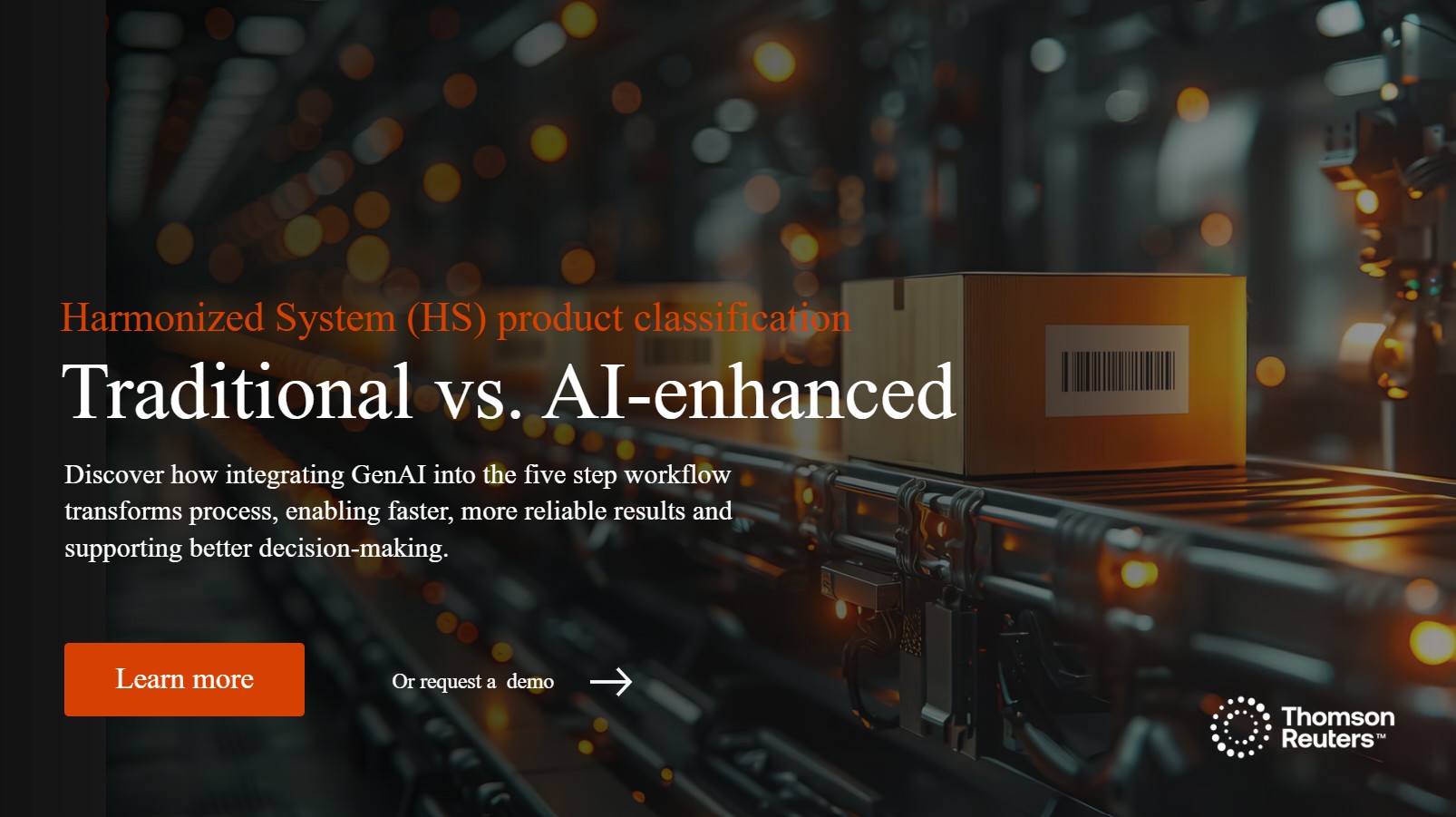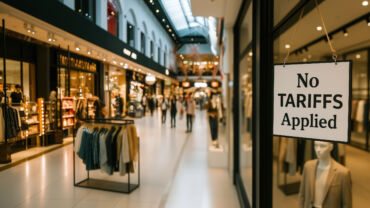The classification challenges every global trade professional knows
Highlights:
|
Traditional product classification operates like a digital filing cabinet with predetermined categories. While functional, these rule-based systems miss the nuances that define your specific business operations. They can’t adapt to your company’s unique product mix or learn from your team’s expertise.
The limitations of current approaches are becoming increasingly apparent across industries. The challenge is particularly acute because the people evaluating AI solutions; compliance managers, export specialists, and trade professionals, are the same individuals currently managing these manual, error-prone processes daily. According to Thomson Reuters customer research, these professionals are struggling with classification workflows that lack the intelligence needed for today’s complex global trade environment.
How AI-powered product classification changes the game
Unlike traditional rule-based systems, AI-powered classification systems learn and adapt. Here are three transformative ways this technology is reshaping how global trade teams approach product classification:
- From static rules to dynamic learning
Traditional systems follow predetermined pathways that can’t evolve with your business. For the compliance managers and trade specialists making classification decisions every day, this means repeatedly solving the same problems without the system getting smarter. AI-powered classification continuously learns from your decisions, building institutional knowledge that improves accuracy over time. When your team makes classification decisions, the system captures that expertise and applies it to similar products automatically.
- From generic categories to business-specific intelligence
Rule-based classification treats all companies the same way. But as export compliance managers tell us, “We have multiple ERPs, local solutions, and a lot of manual work. No central visibility.” AI understands your unique product portfolio, supplier relationships, and operational patterns. It recognizes that your “medical device components” require different classification considerations than another company’s consumer electronics, even when the base materials are similar.
- From reactive compliance to proactive optimization
Traditional systems only flag issues after they occur. The professionals managing these processes, often the same people researching and implementing new solutions, know firsthand how costly reactive approaches can be. AI-powered classification anticipates potential compliance challenges and suggests optimizations before products move through customs. This proactive approach helps teams avoid costly delays and ensures audit-ready documentation from the start.
 |
|
The evolution that changes everything
Artificial Intelligence represents a fundamental shift from reactive classification to proactive learning. Instead of following rigid rules, AI systems analyze patterns, recognize relationships, and improve accuracy based on your real-world data.
But here’s what matters for global trade professionals: not all AI is created equal. Generic AI tools lack the domain expertise and regulatory knowledge that compliance requires. Professional-grade AI, what we call “agentic AI“, goes beyond basic automation to plan, reason, act, and react within your existing workflows.
How AI-powered product classification learns your business DNA
Modern AI product classification operates on three distinct learning levels that create unprecedented accuracy for your operations:
- Regulatory foundation learning: The system starts with comprehensive knowledge of global trade regulations — Harmonized System (HS) codes, country-specific requirements, and regulatory frameworks across jurisdictions. This ensures compliance while providing the baseline for sophisticated learning.
- Industry context recognition: The system incorporates industry-specific patterns. For automotive manufacturers, it understands engine components versus body panels. For pharmaceutical companies, it recognizes active ingredients versus excipients. This contextual awareness eliminates generic classification errors.
Your institutional knowledge integration: Here’s where AI becomes powerful for your organization. The system analyzes your historical classification decisions — the same decisions that compliance managers and trade specialists have been making manually. It understands your product mix, naming conventions, and business logic. It learns how your team has classified similar products and applies that knowledge to new items.
Beyond accuracy: Strategic AI advantages you can measure
The learning capability delivers benefits that extend far beyond product classification accuracy — benefits that matter most to the professionals currently managing these processes:
- Consistency across regions: AI applies learned patterns uniformly, eliminating variations between different teams and locations
- Speed improvements: What required hours of research now happens in minutes — teams report significant time savings on routine classifications
- Institutional memory: New team members benefit from accumulated knowledge of predecessors, embedded within the system
- Audit readiness: Centralized, searchable records provide the audit trail compliance teams need
Real-world AI classification impact: What customers tell us
The voice of experience comes directly from the professionals living these challenges daily:
“Sanctions are changing every four months… the biggest challenge is converting them into the system,” explains a compliance manager. Agentic AI addresses this by automatically updating regulatory content and providing proactive alerts when changes affect your classifications.
“We have multiple ERPs, local solutions, and a lot of manual work. No central visibility,” notes an export compliance manager. API-driven integration breaks down these silos, enabling seamless data flow between your ERP, compliance, and analytics platforms.
“We’re looking for an AI tool for tariff number assignment and classification… more efficient, faster, more compliant,” shares another compliance manager — capturing exactly what AI-powered classification delivers.
Classification implementation that works with your existing systems
Modern AI classification integrates with existing ERP systems and trade management platforms. For the trade professionals who will be implementing and using these systems, this means no disruption to current operations while building the intelligence that will transform your classification process.
Our implementation approach ensures the AI system aligns with your organization’s needs from day one, learning from the expertise that compliance managers and trade specialists have developed through years of hands-on experience.
The competitive reality
Organizations still relying on manual classification face an increasingly difficult landscape. The compliance managers and export specialists managing these processes know this reality firsthand — they’re the ones dealing with growing regulatory complexity while trying to maintain accuracy and speed. Meanwhile, competitors using AI-powered systems gain strategic advantages through faster, more accurate, and more consistent processes.
The question isn’t whether AI will transform product classification — it’s whether your organization will lead or follow this transformation.
Your next step toward intelligent, AI product classification
The shift to AI-powered product classification represents more than a technology upgrade. For the global trade professionals who will champion, implement, and use these systems, it’s a strategic move toward more intelligent, responsive, and competitive operations.
Your products are unique. Your business patterns are distinctive. Your classification system should reflect and leverage both.
Ready to see how AI can learn from your business patterns? Explore ONESOURCE Global Classification AI and discover how intelligent automation transforms product classification for global trade professionals.











